The Art of Today Is Considered Global Because of
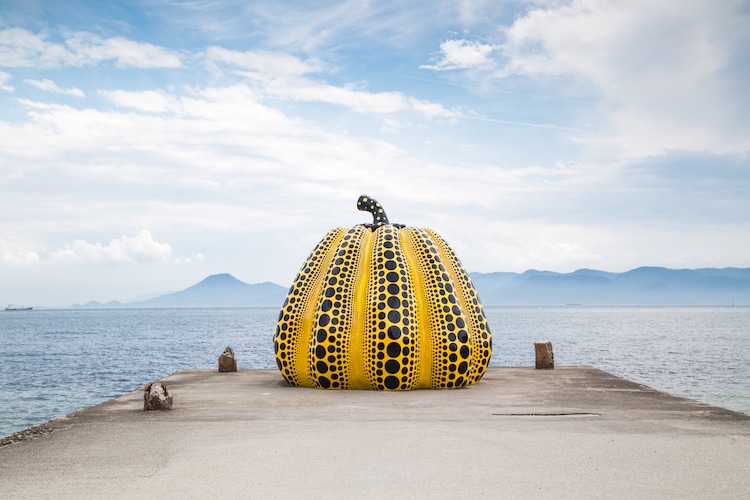
Yayoi Kusama, "Yellow Pumpkin," 1994 (Stock Photos from Adam Rifi/Shutterstock)
To many people, coming up with acontemporary art definition can be a tricky chore. While its title is simplistic and straightforward, its modern-day significant is not as clear-cutting. Fortunately, understanding what constitutes as "gimmicky" is entirely possible once ane traces the concept's history and explores its underlying themes.
What is contemporary art?
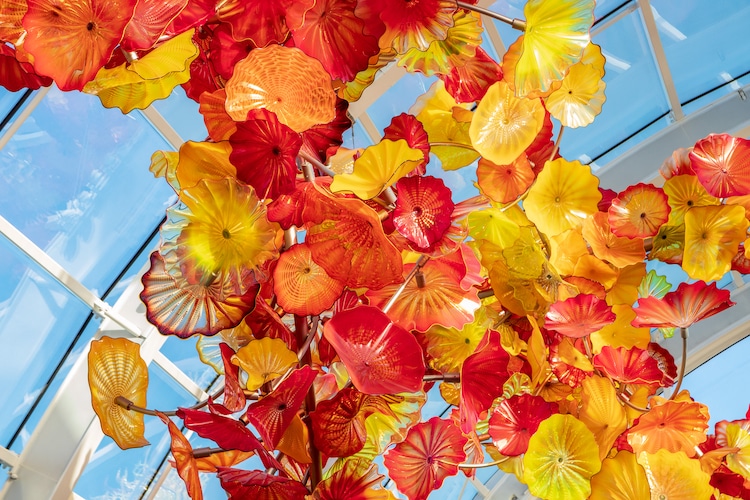
Chihuly Garden and Glass in the Seattle Eye (Photo: Stock Photos from ApinBen4289/Shutterstock)
In its well-nigh basic sense, the term contemporary art refers to fine art—namely, painting, sculpture, photography, installation, performance, and video art—produced today. Though seemingly simple, the details surrounding this definition are ofttimes a bit fuzzy, as different individuals' interpretations of "today" may widely and wildly vary. Therefore, the exact starting signal of the genre is nevertheless debated; however, many fine art historians consider the tardily 1960s or early 1970s (the end of modern fine art, or modernism) to be an adequate judge.
History: Major Gimmicky Art Movements and Artists
Given its "fine art of today" definition, you may be surprised to hear that contemporary art really has a relatively long history. To trace its evolution, let's accept a wait at the major movements and important artists that compose its history.
Popular Fine art

Andy Warhol, "Flowers" (Photo: Stock Photos from Radu Bercan/Shutterstock)
Intended equally a reaction to preceding modern art movements, contemporary fine art is thought to have begun on the heels of Popular Fine art. In post-war United kingdom and America, Popular Fine art was pioneered past artists similar Andy Warhol and Roy Lichtenstein. Information technology is defined past an involvement in portraying mass civilization and reimagining commercial products as accessible fine art. While the movement lasted roughly from the 1950s through the early 1970s, it was reborn as Neo-Pop Art in the 1980s thanks to artists like Jeff Koons.
Photorealism
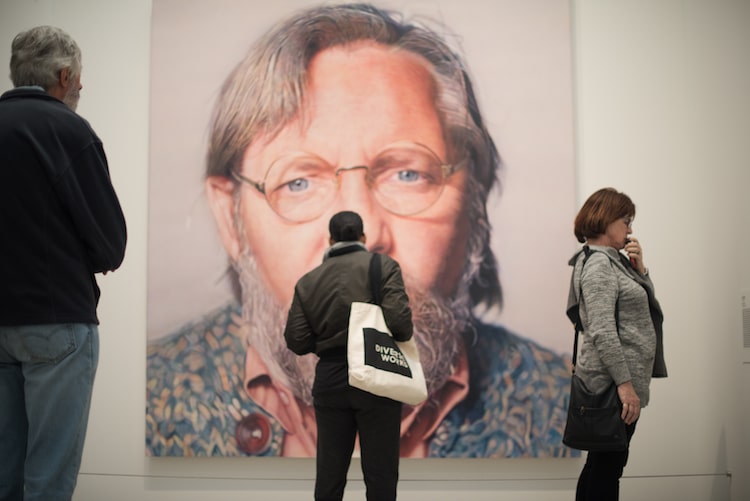
Portrait of Chuck Shut (Photo: Stock Photos from Rushay/Shutterstock)
Much like artists working in the Pop Art style sought to artistically reproduce objects, those involved with Photorealism—a concurrent movement—aimed to create hyperrealistic drawings and paintings. Photorealists oftentimes worked from photographs, which enabled them to accurately reproduce portraits, landscapes, and other iconography. Chuck Close and Gerhard Richter oft worked in this style.
Conceptualism
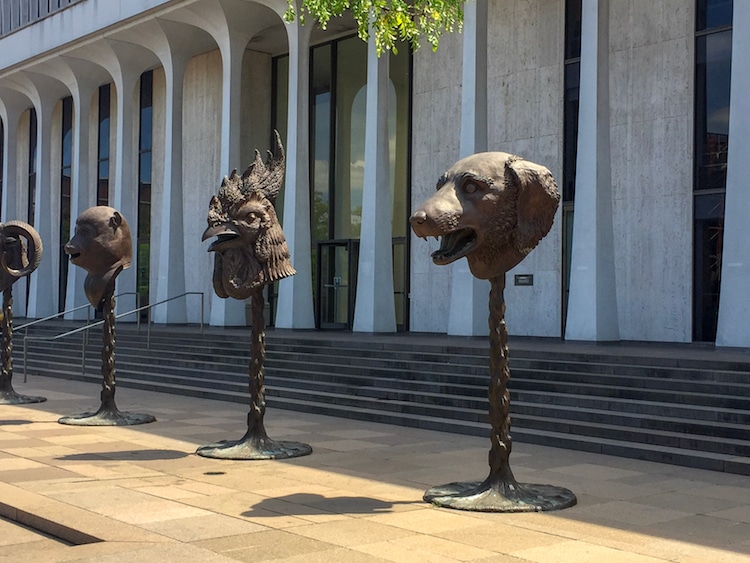
Ai Wei Wei, "Circle of Animals/ Zodiac Heads," 2010 (Photo: Stock Photos from Alisa_Ch/Shutterstock)
In turn, Pop Art besides helped shape Conceptualism, which rejected the idea of fine art as a article. In conceptual art, the idea backside a work of fine art takes precedence. Major conceptual artists include Damien Hirst, Ai Wei Wei, and Jenny Holzer. Though this experimental movement is rooted in art of the early 21st century, it emerged as a formal motility in the 1960s and remains a major contemporary art motion today.
Minimalism
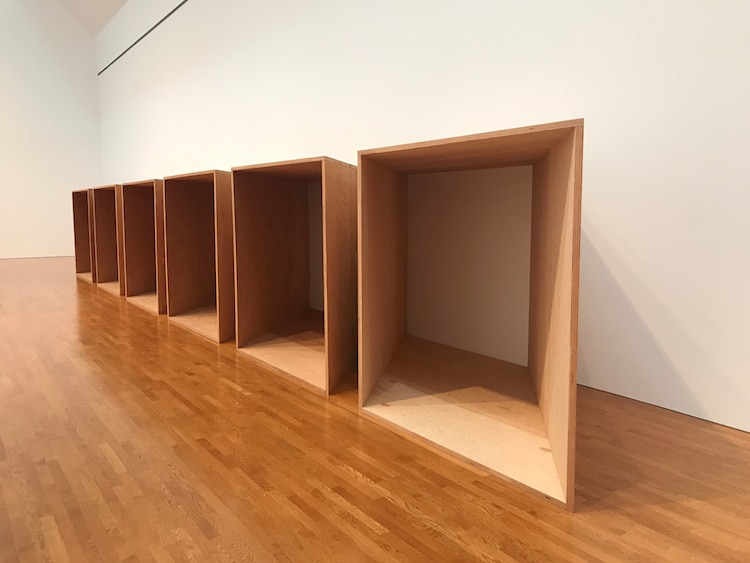
Donald Judd, "Untitled," 1973 (Photo: Stock Photos from Todamo/Shutterstock)
Like Conceptualism, Minimalism materialized in the 1960s and is nevertheless prevalent today. According to the Tate, both movements "challenged the existing structures for making, disseminating and viewing art." What sets Minimalism apart, however, is that its simple, abstract aesthetic invites viewers to respond to what they come across—not what they retrieve a given piece of work of art represents. Donald Judd, Sol LeWitt, and Dan Flavin are some key Minimalist artists.
Performance Art
Another movement with Conceptualist roots is Operation Art. Beginning in the 1960s and retaining its popularity today, operation fine art is a drama-inspired approach to art. While the art form is performed by artists (equally the name suggests), it is not solely intended as entertainment. Instead, its goal is to convey a bulletin or idea. Predominant functioning artists includeMarina Abramović, Yoko Ono, and Joseph Beuys.
Installation Art
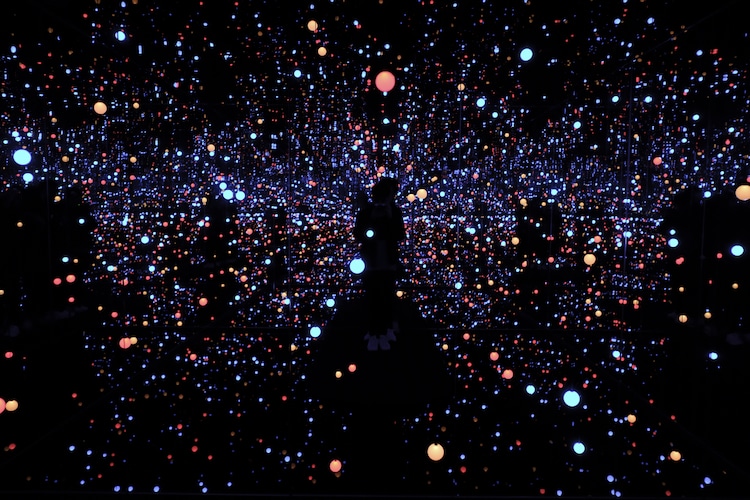
Yayoi Kusama, "Gleaming Lights of the Souls," 2008 (Photo: Stock Photos from ephst/Shutterstock)
Like functioning pieces, installation art is an immersive medium of art. Installations are iii-dimensional constructions that transform their surroundings and alter viewers' perceptions of space. Oftentimes, they're big-scale and site-specific, enabling artists to transform any space into a customized, interactive environment. Well-known installation artists include Yayoi Kusama,Dale Chihuly, and Bruce Munro.
World Art
A unique spin on installation art, Earth Art (or Country Art) is a movement in which artists transform natural landscapes into site-specific works of art. Robert Smithson, Christo and Jeanne-Claude, andAndy Goldsworthy are celebrated for their avant-garde earthworks.
Street Art
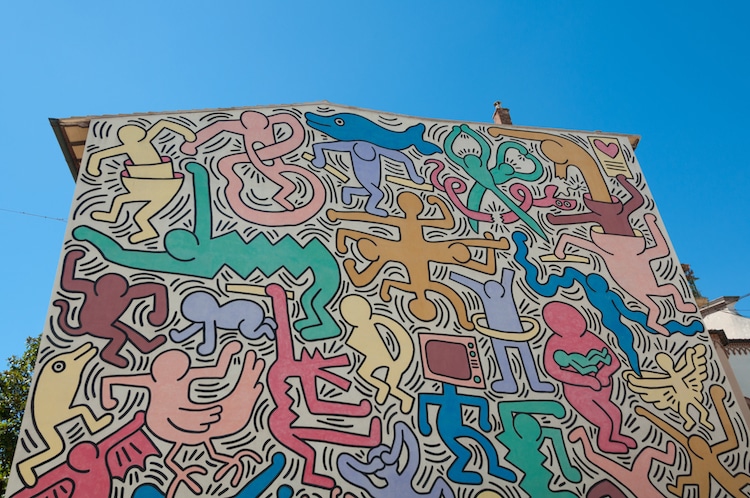
Keith Haring, "The Pisa's Mural, 1989 past Stock Photos from peepy/Shutterstock
As ane of the nearly recent contemporary fine art movements, street fine art is a genre that gained prominence with the rising of graffiti in the 1980s. Often rooted in social activism, street art includes murals, installations, stenciled images, and stickers erected in public spaces. Key street artists include figures from the 1980s, like Jean-Michel Basquiat and Keith Haring, as well equally practicing artists like Banksy andShepard Fairey.
Contemporary Art and the Digital Age
Gimmicky art is continuously evolving and more artists are taking advantage of new applied science to farther their creativity. This includes code-generated art, which can produce everything from abstract pieces to futuristic vector portraits. Every bit advances in artificial intelligence proceed, some artists are using the technology to create hyperrealistic portraits that test the boundary between reality and imagination.
Crypto art , which takes advantage of blockchain technology, has been picking upwardly steam since 2020. With digital artist Beeple making a landmark $69 million sale at Christie's with his NFT collage, more artists and fine art institutions are seeing the possibilities in this grade of art. Crypto art is allowing digital artists to monetize work that may take been previously difficult to sell. The boom in NFT art is allowing artists who create ephemeral pieces— whether installations, performances, or murals—to be compensated and nerveless in a mode that was previously unheard of.
What'due south Next for Contemporary Art?
While some of the artists we've looked at are either no longer live or unable to practice, many aforementioned greats, including—but not limited to—Damien Hirst, Ai Wei Wei,Marina Abramović, Yayoi Kusama, and Jeff Koons, continue to create avant-garde works of painting, sculpture, installation, and functioning art.
In addition to these famous figures, many up-and-coming contemporary artists are stunning the globe with their original approach to art. On peak of putting their ain twists on conventional forms like painting, sculpture, and installation, they've as well popularized unexpected forms of art, like embroidery, origami, and tattoos, proving the countless possibilities of the all-encompassing genre.
This article has been edited and updated.
Related Manufactures:
ten of the Best Gimmicky Art Museums to Visit Effectually the Globe
12 Gimmicky Artists Tell Us What it Takes to Make a Cracking Piece of Art
6 of the Best Modern Art Museums in the World
Source: https://mymodernmet.com/what-is-contemporary-art-definition/
0 Response to "The Art of Today Is Considered Global Because of"
إرسال تعليق